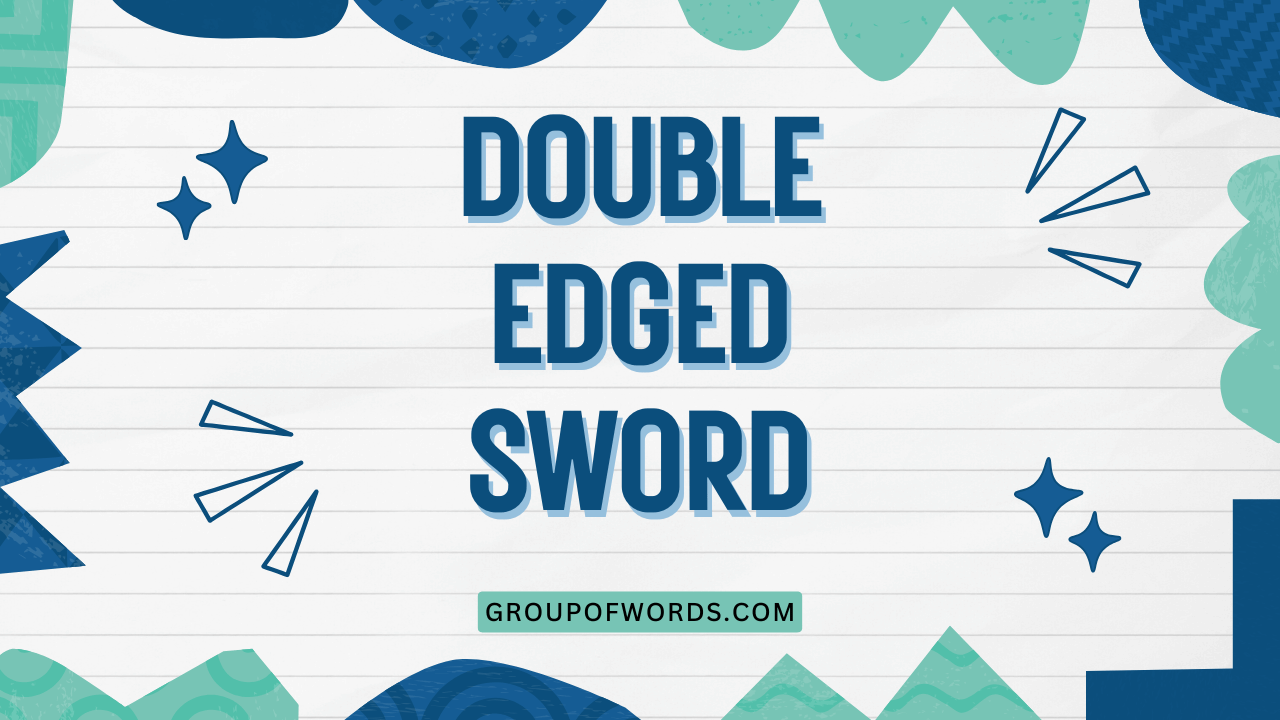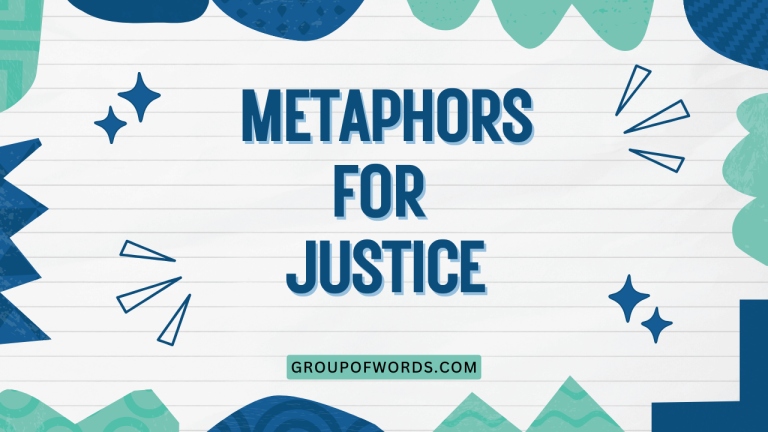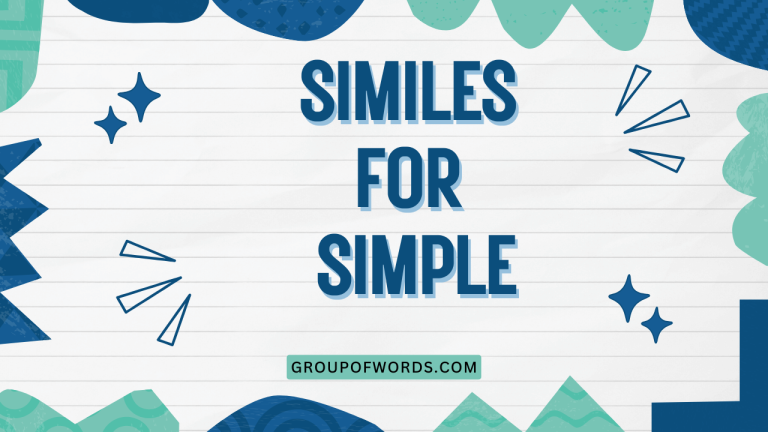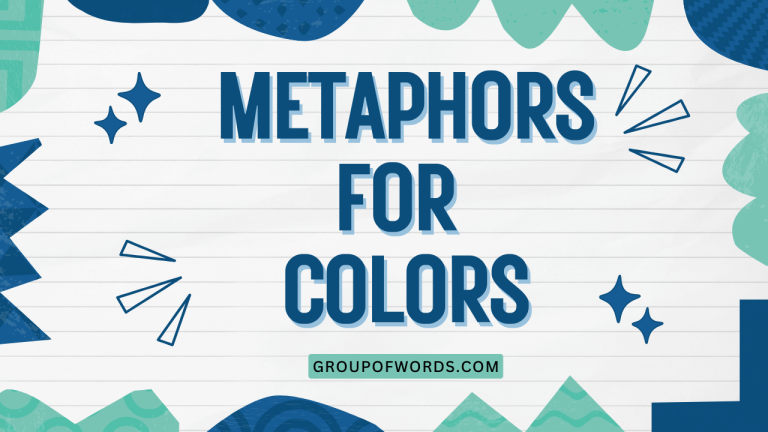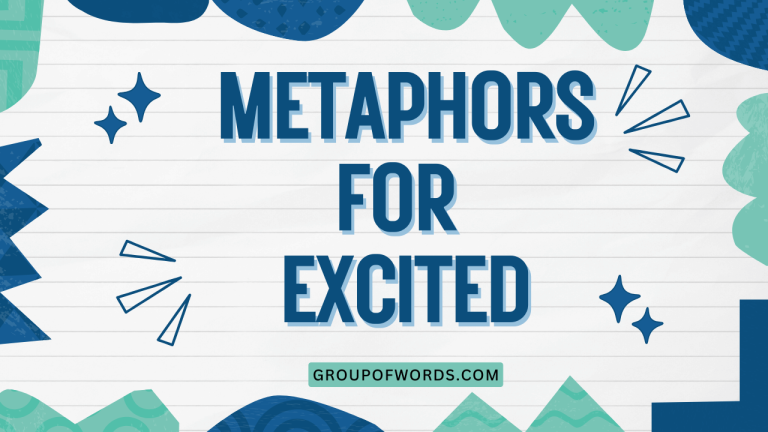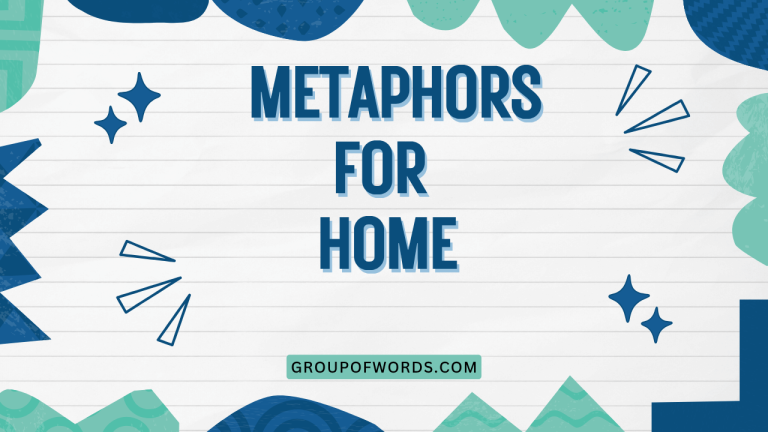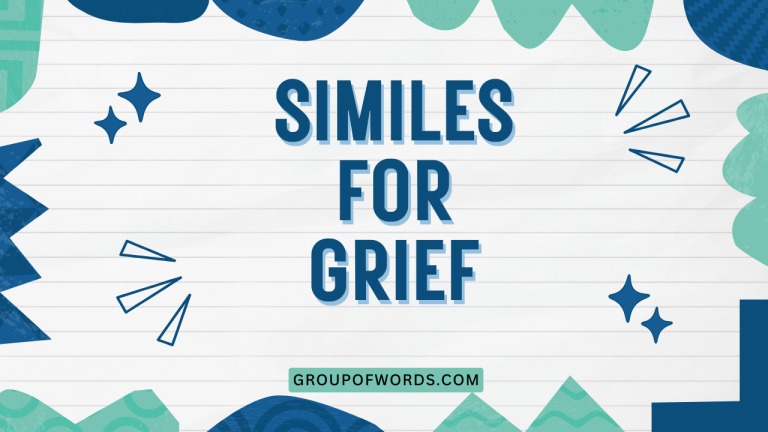The Double-Edged Sword: Mastering Figurative Language
The phrase “double-edged sword” is a common idiom in English, referring to something that can have both favorable and unfavorable consequences. Understanding its nuances and usage is crucial for effective communication and comprehension of English literature and everyday conversations.
This article provides a comprehensive guide to the double-edged sword, exploring its definition, structure, usage, and potential pitfalls. Whether you’re an English language learner or a native speaker looking to refine your understanding, this guide will equip you with the knowledge to wield this powerful idiom with precision.
This article is designed to benefit a wide range of learners, from intermediate English students to advanced writers seeking to improve their expressiveness. By exploring the various facets of this idiom, we aim to provide a deep understanding that transcends mere memorization, enabling readers to recognize and use the “double-edged sword” idiom with confidence and accuracy.
Table of Contents
- Definition of “Double-Edged Sword”
- Structural Breakdown
- Types and Categories of Double-Edged Swords
- Examples of Double-Edged Swords
- Usage Rules
- Common Mistakes
- Practice Exercises
- Advanced Topics
- FAQ
- Conclusion
Definition of “Double-Edged Sword”
A “double-edged sword” is a figure of speech, specifically an idiom, that describes something which appears to be beneficial but can also be detrimental or risky. The analogy comes from a literal sword with two sharp edges, which can be used to attack, but also carries the risk of injuring the wielder.
The core idea is that any action, policy, or decision can have both positive and negative consequences, often simultaneously or unexpectedly. It is a powerful tool for highlighting the complexity and potential unintended outcomes of various situations.
The phrase functions as a noun phrase, often used as a subject complement, object, or appositive. It adds depth and nuance to discussions, prompting consideration of both the advantages and disadvantages of a particular situation or choice.
It is commonly used in various contexts, from political discourse to personal relationships, to illustrate the multifaceted nature of reality.
In essence, the “double-edged sword” idiom serves as a cautionary reminder that even the most promising solutions or opportunities can carry hidden dangers or unintended negative effects. Its effectiveness lies in its ability to succinctly convey the idea of inherent duality and the need for careful consideration before taking action.
Structural Breakdown
The phrase “double-edged sword” is relatively simple in its structure. It consists of three main components:
- Adjective: “Double-edged” – This describes the nature of the sword, indicating its two sharp sides.
- Noun: “Sword” – This is the literal object being used as a metaphor.
The adjective “double-edged” is a compound adjective, formed by combining “double” and “edged.” This compound adjective modifies the noun “sword,” creating a descriptive phrase that evokes a specific image and meaning. The entire phrase functions as a noun phrase, which can then be used in various grammatical contexts within a sentence.
Here’s how the phrase typically functions in a sentence:
- Subject Complement: The new policy is a double-edged sword.
- Object: They viewed the technological advancement as a double-edged sword.
- Appositive: Her ambition, a double-edged sword, drove her to succeed but also alienated her from others.
The power of the idiom lies not just in its literal components but in the implied meaning and the context in which it is used. Understanding the structural elements helps in recognizing and interpreting the phrase correctly in different situations.
Types and Categories of Double-Edged Swords
While the core meaning of “double-edged sword” remains consistent, the contexts in which it is applied can vary widely. Categorizing these contexts can help in understanding the diverse applications of the idiom.
1. Technological Advancements
New technologies often bring both progress and potential risks. For example, social media can connect people globally but also lead to privacy concerns and cyberbullying.
2. Political Policies
Government policies intended to improve society can sometimes have unintended negative consequences. For instance, strict environmental regulations might protect the environment but also hinder economic growth.
3. Economic Strategies
Business decisions aimed at increasing profits can also create ethical dilemmas or harm stakeholders. For example, outsourcing production to reduce costs might lead to job losses in the home country.
4. Personal Traits
Even positive personality traits can have drawbacks. For instance, ambition can drive success but also lead to stress and burnout.
5. Medical Treatments
Medical interventions designed to cure diseases can sometimes have side effects that are as harmful as the original condition. For example, chemotherapy can kill cancer cells but also damage healthy tissues.
These categories are not mutually exclusive, and many situations can fall into multiple categories. The key is to recognize the inherent duality and the potential for both positive and negative outcomes.
Examples of Double-Edged Swords
To further illustrate the usage of “double-edged sword,” here are several examples categorized by the types discussed above.
Technological Advancements
The following table illustrates how technological advancements can be a double-edged sword.
| Example | Positive Aspect | Negative Aspect |
|---|---|---|
| Social media | Connects people globally, facilitates communication | Privacy concerns, cyberbullying, misinformation |
| Artificial intelligence | Automates tasks, improves efficiency, enhances decision-making | Job displacement, algorithmic bias, ethical concerns |
| Internet | Provides access to information, enables online learning and commerce | Spread of misinformation, addiction, security risks |
| Mobile phones | Instant communication, access to information on the go | Distraction, addiction, privacy invasion |
| Automation in manufacturing | Increases production speed, reduces labor costs | Job losses, deskilling of workforce |
| Drones | Aerial photography, delivery services, surveillance | Privacy violations, potential for misuse, safety concerns |
| Biotechnology | Medical advancements, disease prevention, improved agriculture | Ethical concerns, potential for misuse, unforeseen consequences |
| Nanotechnology | Advanced materials, targeted drug delivery, improved electronics | Potential health risks, environmental concerns, unknown long-term effects |
| Cloud computing | Scalable storage, remote access, collaboration tools | Security vulnerabilities, data breaches, dependency on internet |
| Cryptocurrency | Decentralized finance, secure transactions, potential for investment | Volatility, regulatory uncertainty, potential for illegal activities |
| E-commerce | Convenient shopping, wider product selection, competitive pricing | Security risks, lack of personal interaction, potential for fraud |
| Virtual reality | Immersive experiences, training simulations, entertainment | Potential for addiction, social isolation, health concerns |
| 3D printing | Rapid prototyping, customized products, on-demand manufacturing | Potential for counterfeiting, environmental impact, job displacement |
| Big data analytics | Improved decision-making, personalized services, predictive analysis | Privacy concerns, potential for discrimination, data security risks |
| Renewable energy sources | Reduced carbon emissions, sustainable energy, energy independence | Intermittency, high initial costs, land use concerns |
| Wearable technology | Health monitoring, fitness tracking, personalized feedback | Privacy concerns, data security risks, potential for addiction |
| Telemedicine | Remote healthcare access, convenient consultations, cost savings | Limited physical examination, technological barriers, privacy concerns |
| GPS technology | Navigation assistance, location tracking, improved logistics | Privacy concerns, dependency on technology, potential for misuse |
| Online education | Flexible learning, wider access to education, personalized learning | Lack of face-to-face interaction, potential for distraction, digital divide |
| Smart homes | Convenience, energy efficiency, security features | Privacy concerns, security vulnerabilities, dependency on technology |
| Robotics | Automation of dangerous tasks, precision manufacturing, healthcare assistance | Job displacement, ethical concerns, potential for misuse |
| Gene editing (CRISPR) | Potential to cure genetic diseases, improve crops, enhance human capabilities | Ethical concerns, potential for misuse, unforeseen consequences |
| Nuclear energy | High energy output, low greenhouse gas emissions | Risk of accidents, nuclear waste disposal, security concerns |
| Internet of Things (IoT) | Increased automation, data-driven insights, improved efficiency | Security vulnerabilities, privacy concerns, data overload |
| Quantum computing | Revolutionary computing power, potential for solving complex problems | Ethical concerns, security risks, early stage development |
Political Policies
The following table provides examples of how political policies can act as a double-edged sword.
| Example | Positive Aspect | Negative Aspect |
|---|---|---|
| Free trade agreements | Increased economic growth, lower consumer prices | Job losses in domestic industries, exploitation of workers in developing countries |
| Stricter environmental regulations | Protect the environment, reduce pollution | Hinder economic growth, increase business costs |
| Increased government spending on social programs | Reduce poverty, improve healthcare and education | Increased taxes, potential for government debt |
| Open border policies | Increased labor supply, cultural diversity | Strain on social services, potential for social unrest |
| Tax cuts for corporations | Stimulate economic growth, encourage investment | Increased income inequality, reduced government revenue |
| Price controls | Make essential goods and services more affordable | Shortages, black markets, reduced production |
| Minimum wage laws | Improve living standards for low-wage workers | Job losses, increased business costs, inflation |
| Affirmative action policies | Promote diversity, redress past discrimination | Reverse discrimination, potential for resentment |
| Gun control laws | Reduce gun violence, improve public safety | Infringement on Second Amendment rights, potential for illegal gun markets |
| Drug legalization | Reduce crime, generate tax revenue | Increased addiction rates, public health concerns |
| Nationalization of industries | Ensure public access to essential services, control strategic resources | Inefficiency, corruption, stifled innovation |
| Deregulation | Stimulate competition, reduce bureaucracy | Environmental damage, financial instability, reduced consumer protection |
| Trade protectionism | Protect domestic industries, create jobs | Higher consumer prices, reduced competition, trade wars |
| Austerity measures | Reduce government debt, improve fiscal responsibility | Economic recession, reduced social services, increased unemployment |
| Surveillance programs | Prevent terrorism, improve national security | Privacy violations, potential for abuse, chilling effect on free speech |
| Immigration restrictions | Protect domestic jobs, preserve national culture | Labor shortages, reduced innovation, economic stagnation |
| Foreign aid | Promote economic development, alleviate poverty | Corruption, dependency, unintended consequences |
| Sanctions | Punish rogue states, deter aggression | Harm civilian populations, economic instability, unintended political outcomes |
| Military intervention | Protect human rights, promote democracy | Loss of life, destabilization, unintended consequences |
| Environmental subsidies | Encourage renewable energy, reduce pollution | Market distortions, inefficiency, potential for fraud |
| Public health mandates (e.g., mask mandates) | Reduce disease transmission, protect vulnerable populations | Infringement on personal freedoms, economic disruptions, social division |
| Urban zoning laws | Organize land use, promote efficient development | Segregation, increased housing costs, limited development options |
| Copyright laws | Protect intellectual property, incentivize creativity | Restricted access to information, stifled innovation, high prices |
| Campaign finance regulations | Reduce corruption, level the playing field | Infringement on free speech, difficulty for challengers to compete, unintended consequences |
| Police reform initiatives | Reduce police brutality, improve community relations | Reduced police effectiveness, increased crime rates, unintended consequences |
Personal Traits
The following table shows examples of how personal traits can be a double-edged sword.
| Example | Positive Aspect | Negative Aspect |
|---|---|---|
| Ambition | Drives success, fosters achievement | Leads to stress, burnout, strained relationships |
| Intelligence | Facilitates problem-solving, enhances learning | Can lead to arrogance, isolation, overthinking |
| Creativity | Fosters innovation, enables artistic expression | Can lead to instability, impracticality, emotional vulnerability |
| Confidence | Inspires trust, enables leadership | Can lead to overconfidence, recklessness, poor judgment |
| Humility | Promotes empathy, fosters collaboration | Can lead to self-doubt, lack of assertiveness, missed opportunities |
| Optimism | Inspires hope, motivates action | Can lead to unrealistic expectations, disappointment, poor planning |
| Pessimism | Promotes caution, encourages thorough planning | Can lead to negativity, inaction, missed opportunities |
| Perfectionism | Ensures high quality, promotes attention to detail | Can lead to anxiety, procrastination, inability to complete tasks |
| Generosity | Fosters goodwill, strengthens relationships | Can lead to exploitation, financial strain, enabling bad behavior |
| Independence | Promotes self-reliance, fosters autonomy | Can lead to isolation, difficulty collaborating, resistance to help |
| Loyalty | Strengthens relationships, promotes trust | Can lead to blind obedience, enabling harmful behavior, difficulty making objective decisions |
| Discipline | Promotes productivity, enables goal achievement | Can lead to rigidity, inflexibility, neglecting other aspects of life |
| Empathy | Fosters understanding, promotes compassion | Can lead to emotional exhaustion, taking on others’ problems, difficulty setting boundaries |
| Assertiveness | Enables clear communication, promotes self-respect | Can lead to aggressiveness, alienating others, strained relationships |
| Adaptability | Enables resilience, promotes flexibility | Can lead to lack of direction, compromising values, difficulty committing to long-term goals |
| Curiosity | Promotes learning, fosters innovation | Can lead to distraction, lack of focus, getting into trouble |
| Honesty | Builds trust, promotes integrity | Can lead to hurting others’ feelings, damaging relationships, legal consequences |
| Patience | Enables perseverance, promotes understanding | Can lead to complacency, missed opportunities, enabling bad behavior |
| Courage | Enables risk-taking, promotes standing up for beliefs | Can lead to recklessness, endangering oneself and others, foolish decisions |
| Humor | Reduces stress, fosters connection | Can lead to insensitivity, offending others, undermining seriousness |
| Intuition | Enables quick decision-making, provides insights | Can lead to impulsive decisions, ignoring facts, poor judgment |
| Drive | Motivates action, promotes achievement | Can lead to burnout, neglecting personal well-being, strained relationships |
| Resilience | Enables bouncing back from setbacks, promotes perseverance | Can lead to ignoring warning signs, staying in harmful situations, difficulty learning from mistakes |
| Communication Skills | Facilitates understanding, builds relationships | Can be used for manipulation, spreading misinformation, causing conflict |
| Analytical Skills | Enables problem-solving, promotes critical thinking | Can lead to overthinking, paralysis by analysis, cynicism |
These examples demonstrate the multifaceted nature of the “double-edged sword” idiom, highlighting the importance of considering both the potential benefits and drawbacks of any situation or decision.
Usage Rules
Using “double-edged sword” correctly involves understanding its nuances and applying it appropriately in context. Here are some key rules to follow:
- Use it when there are both positive and negative aspects: Only use the idiom when the situation truly has both advantages and disadvantages.
- Ensure clarity: Make sure the context clearly indicates what the positive and negative aspects are.
- Avoid overuse: Like any idiom, overuse can diminish its impact. Use it sparingly for maximum effect.
- Consider the audience: Ensure your audience understands the idiom. While it is relatively common, it may not be familiar to everyone, especially non-native speakers.
Here are some examples of correct usage:
- “The new marketing strategy is a double-edged sword; it could significantly increase sales, but it also risks alienating our loyal customers.”
- “While globalization has brought economic benefits to many countries, it is also a double-edged sword, leading to job losses in some sectors.”
- “Her unwavering dedication to her work is a double-edged sword, bringing her success but also causing her to neglect her personal life.”
Common Mistakes
Several common mistakes can occur when using the “double-edged sword” idiom. Recognizing these errors can help you avoid them in your own writing and speech.
| Incorrect Usage | Correct Usage | Explanation |
|---|---|---|
| “The policy is a double-edged sword because it’s simply bad.” | “The policy is a double-edged sword because while it aims to reduce crime, it also infringes on civil liberties.” | The idiom requires both positive and negative aspects. |
| “He used the double-edged sword to cut the bread.” | N/A (This is a literal, not idiomatic, usage.) | The idiom is figurative, not literal. |
| “The new software is a double-edged sword, and it’s great!” | “The new software is a double-edged sword; it’s highly efficient but also expensive.” | The idiom requires acknowledging both positive and negative aspects, not just one. |
| “This decision is a single-edged sword.” | “This decision has only one outcome, which is negative.” (Or, rephrase to highlight potential positive and negative aspects to use the idiom correctly.) | The idiom specifically refers to something with two opposing outcomes. |
| “The double-edged sword is always bad.” | “The situation is a double-edged sword, presenting both opportunities and challenges.” | The idiom implies both positive and negative aspects, not just negativity. |
By understanding these common mistakes, you can ensure that you use the “double-edged sword” idiom accurately and effectively.
Practice Exercises
Test your understanding of the “double-edged sword” idiom with these practice exercises.
Exercise 1: Identifying Double-Edged Swords
Identify which of the following situations can be described as a “double-edged sword.” Explain your reasoning.
| Question | Answer |
|---|---|
| 1. A company implements a new policy that increases employee workload but also offers higher pay. | Yes. Higher pay is a positive aspect, while increased workload is a negative aspect. |
| 2. A new law is passed that completely bans all forms of pollution. | No. While beneficial, the prompt does not provide any negative aspects. |
| 3. A student studies hard and gets excellent grades but sacrifices their social life. | Yes. Excellent grades are a positive aspect, while sacrificing social life is a negative aspect. |
| 4. A country invests heavily in renewable energy, which reduces carbon emissions but requires significant government subsidies. | Yes. Reduced carbon emissions are a positive aspect, while significant government subsidies are a negative aspect. |
| 5. A company decides to cut costs by laying off employees, which increases profits but damages employee morale. | Yes. Increased profits are a positive aspect (for the company), while damaged employee morale is a negative aspect. |
| 6. A government increases taxes on the wealthy to fund social programs. | Yes. Funding social programs is a positive aspect, while increased taxes on the wealthy could be seen as a negative aspect (by some). |
| 7. A city implements strict building codes to ensure safety, but it also makes construction more expensive. | Yes. Ensuring safety is a positive aspect, while more expensive construction is a negative aspect. |
| 8. A school implements a zero-tolerance policy for bullying. | No. While potentially beneficial, the prompt does not describe any negative aspects. |
| 9. A social media platform allows free speech but struggles to control misinformation. | Yes. Free speech is a positive aspect, while struggling to control misinformation is a negative aspect. |
| 10. A country opens its borders to refugees, providing humanitarian aid but straining social services. | Yes. Providing humanitarian aid is a positive aspect, while straining social services is a negative aspect. |
Exercise 2: Using “Double-Edged Sword” in Sentences
Complete the following sentences using the “double-edged sword” idiom. Provide a brief explanation of the positive and negative aspects.
| Question | Answer | Explanation |
|---|---|---|
| 1. The new technology is a _____; it increases productivity but also _____. | The new technology is a double-edged sword; it increases productivity but also displaces some workers. | Increased productivity is positive, while job displacement is negative. |
| 2. While social media can be a powerful tool for communication, it is also a _____; it connects people but also _____. | While social media can be a powerful tool for communication, it is also a double-edged sword; it connects people but also spreads misinformation. | Connecting people is positive, while spreading misinformation is negative. |
| 3. The company’s aggressive marketing strategy is a _____; it attracts new customers but also _____. | The company’s aggressive marketing strategy is a double-edged sword; it attracts new customers but also damages the company’s reputation. | Attracting new customers is positive, while damaging the company’s reputation is negative. |
| 4. Globalization is a _____; it promotes economic growth but also _____. | Globalization is a double-edged sword; it promotes economic growth but also increases income inequality. | Promoting economic growth is positive, while increasing income inequality is negative. |
| 5. Her incredible work ethic is a _____; it leads to success but also _____. | Her incredible work ethic is a double-edged sword; it leads to success but also causes burnout. | Leading to success is positive, while causing burnout is negative. |
| 6. The government’s new economic policy is a _____; it aims to stimulate the economy but also _____. | The government’s new economic policy is a double-edged sword; it aims to stimulate the economy but also increases the national debt. | Stimulating the economy is positive, while increasing the national debt is negative. |
| 7. The rise of artificial intelligence is a _____; it automates tasks but also _____. | The rise of artificial intelligence is a double-edged sword; it automates tasks but also raises ethical concerns. | Automating tasks is positive, while raising ethical concerns is negative. |
| 8. The new environmental regulations are a _____; they protect the environment but also _____. | The new environmental regulations are a double-edged sword; they protect the environment but also increase business costs. | Protecting the environment is positive, while increasing business costs is negative. |
| 9. The freedom of speech is a _____; it allows for open expression but also _____. | The freedom of speech is a double-edged sword; it allows for open expression but also enables the spread of hate speech. | Allowing for open expression is positive, while enabling the spread of hate speech is negative. |
| 10. The company’s decision to outsource production is a _____; it reduces costs but also _____. | The company’s decision to outsource production is a double-edged sword; it reduces costs but also results in job losses at home. | Reducing costs is positive, while resulting in job losses is negative. |
Advanced Topics
For advanced learners, exploring the nuances of the “double-edged sword” idiom can involve examining its rhetorical function and its relationship to other literary devices.
- Rhetorical Function: The “double-edged sword” idiom is often used to introduce complexity and ambiguity into an argument. It acknowledges that there are no easy solutions and that every choice has consequences.
- Relationship to Other Literary Devices: This idiom is related to concepts like paradox, irony, and dilemma. It shares with paradox the idea of contradictory elements, with irony the sense of unintended consequences, and with dilemma the sense of being caught between two undesirable options.
Furthermore, analyzing the use of “double-edged sword” in literature and political discourse can provide deeper insights into its persuasive power and its ability to shape public opinion. Consider how authors and speakers use this idiom to frame debates, highlight trade-offs, and influence decision-making.
FAQ
Here are some frequently asked questions about the “double-edged sword” idiom:
- What is the origin of the phrase “double-edged sword”?
The phrase originates from the literal image of a sword with two sharp edges, which can be used to attack but also poses a risk to the wielder. The figurative usage evolved from this literal meaning to describe situations with both positive and negative consequences.
- Is “double-edged sword” always negative?
No, it is not always negative. The idiom implies that there are both positive and negative aspects to something. The overall impact may be negative, positive, or neutral, depending on the specific context and the relative weight of the positive and negative consequences.
- Can I use “double-edged sword” to describe something that is only bad?
No, you should not. The idiom requires the presence of both positive and negative elements. If something is only bad, it is not a “double-edged sword.”
- What are some synonyms for “double-edged sword”?
Some synonyms include “mixed blessing,” “two sides to every coin,” “trade-off,” and “a blessing and a curse.” However, each of these has slightly different nuances, so choose the one that best fits the specific context.
- How can I avoid misusing the “double-edged sword” idiom?
To avoid misuse, always consider whether the situation truly has both positive and negative aspects. Clearly identify what those aspects are, and ensure that your audience understands the intended meaning.
- Is it appropriate to use “double-edged sword” in formal writing?
Yes, it is generally appropriate to use “double-edged sword” in formal writing, as long as it is used correctly and contributes to the clarity and effectiveness of your communication. However, consider your audience and the specific tone of your writing to ensure it is appropriate.
- How does the “double-edged sword” idiom relate to risk management?
The “double-edged sword” idiom is closely related to risk management, as it highlights the importance of identifying and evaluating both the potential benefits and risks of any decision or action. Effective risk management involves carefully weighing these factors and taking steps to mitigate potential negative consequences.
- Can the positive and negative aspects of a “double-edged sword” change over time?
Yes, the positive and negative aspects of a “double-edged sword” can change over time, depending on various factors such as technological advancements, economic conditions, and social norms. What was once considered a benefit may become a liability, and vice versa.
Conclusion
The “double-edged sword” idiom is a powerful tool for expressing the inherent complexity of many situations. By understanding its definition, structure, usage rules, and potential pitfalls, you can wield it effectively to enhance your communication and comprehension of English.
Remember to use it judiciously, ensuring that the context clearly indicates both the positive and negative aspects of the situation you are describing.
Mastering the “double-edged sword” idiom not only improves your vocabulary but also sharpens your critical thinking skills. It encourages you to look beyond the surface and consider the full range of potential consequences before making decisions or forming opinions.
As you continue to learn and grow in your understanding of English, remember that language is a tool that can be used to illuminate the complexities of the world around us.
